Anyone else love pockets? Let’s sew cargo pocket with a magnetic snap flap on to a tote bag!
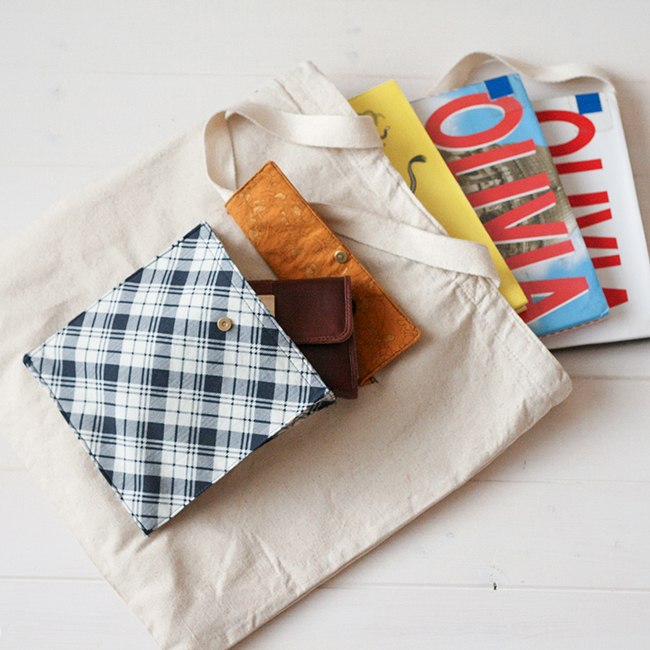
Not only are pockets useful, but they are also a great way to add some color and style to a plain tote bag. This pocket also includes a magnetic snap closure. If you haven’t worked with magnetic snaps before, this is an easy first project. It’s very low risk in terms of the amount of fabric you need and the amount of time you’ll invest.
(This post contains affiliate links, which means I make a small commission at no cost to you. Thanks!)
The materials listed below are estimates. Pockets are a great way to use up fabric scraps, so check and see what you have before you go and buy new fabric!
Materials:
- 1 or 2 fat quarters of cotton fabric (Grab a second fat quarter or use some scraps if you prefer a contrast on the flap or inside the pocket.)
- 1 magnetic snap set (Size is not a big concern. This is what I used.)
- about 1/2 yd. of mid-weight interfacing (I use Pellon 931 or SF101.)
- matching thread
Sew a Cargo Pocket for a Tote Bag:
1. For the main pocket piece, cut out 2 rectangles, 12″ x 8″. For the pocket flap, cut out 2 rectangles, 8″ x 4″.
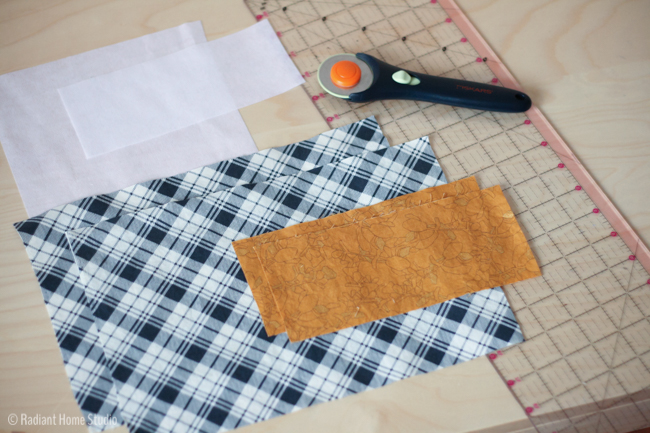
2. Fuse interfacing to 1 main pocket piece and both pocket flaps. (There should be directions included with it. Choose a medium weight like Pellon 931 or SF101.)
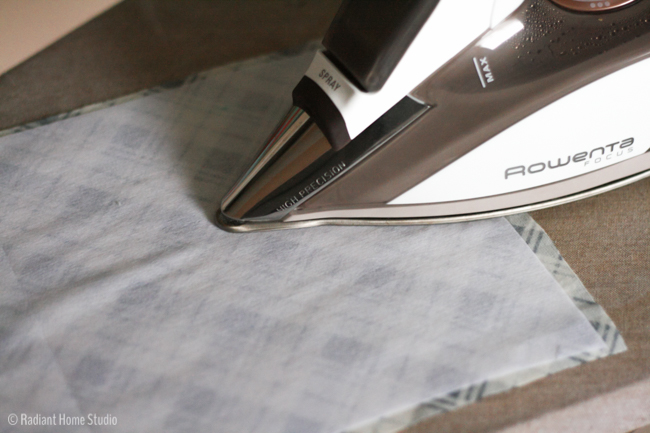
3. Apply magnetic snaps to the interfaced pocket piece, and one of the pocket flaps. For the pocket piece, place the male snap centered across the width and 1 1/2″ from one of the long edges. For the main pocket piece, place the female snap centered across the width and 1 1/2″ from one of the long edges. (These snaps from Amazon are like the ones I used.)

4. Place the large rectangles right sides together. Stitch around the rectangle with 1/2″ seam allowances, leaving a 3-4″ opening near the snap to turn the fabric right side out. It’s best to start stitching on a long straight side (as opposed to the corner).
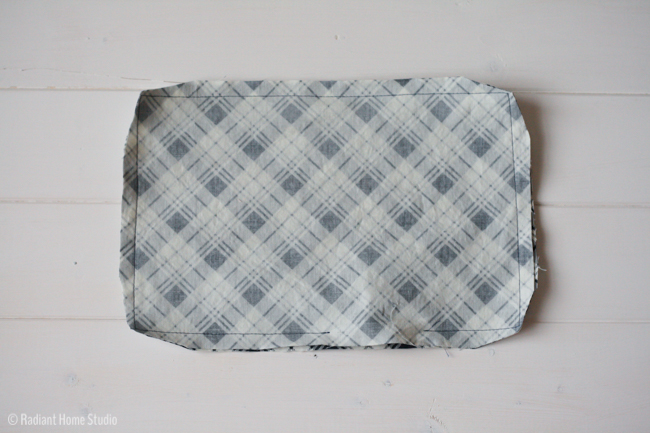
5. Trim the corners and seam allowances. Turn the rectangle right side out through the opening, push out the corners, and press. Tuck in the raw edges at the opening and press those so that they are even.

6. Topstitch at 1/8″ along the edge with the snap. Topstitch another line 1/4″ below that. (You may need to use your zipper foot if you get close to the snap.)

7. Measure and mark the fold lines at 1″ and 2″ from each of the short sides.

8. Fold the fabric toward the pocket lining (the side without the snap) at the 2″ marks and press. Topstitch along the fold lines at 1/8″.
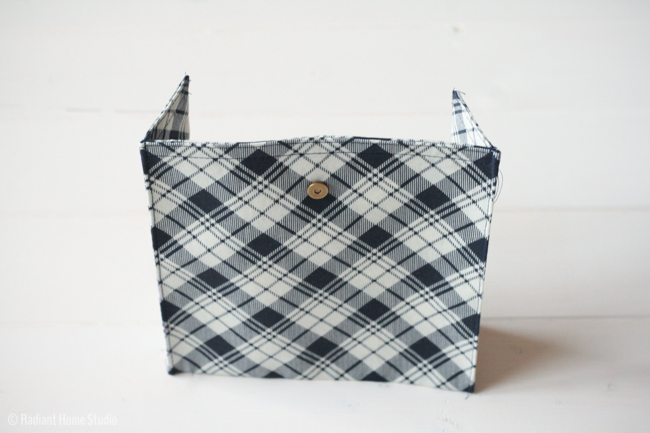
9. Fold and press at the 1″ markings, so that you have a “z”-shaped fold.
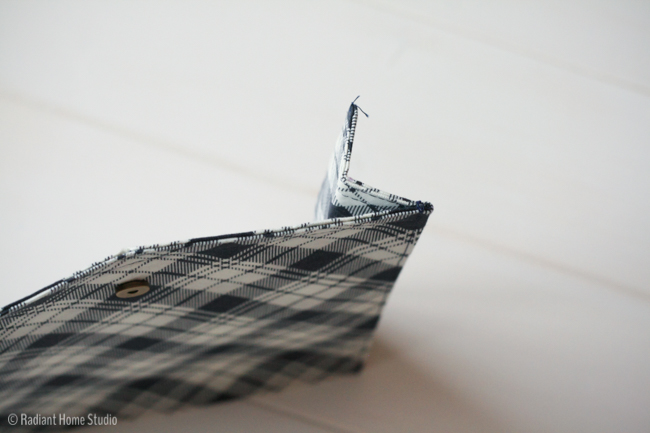
10. Place the pocket on your canvas bag, centered across the width and 2″ from the bottom. Tuck the folded edges under the pocket, so that it is flat, and pin in place.

11. Topstitch the short sides onto one side of the tote bag, through the lower pocket layer only.

12. Topstitch along the bottom of the pocket through all pocket layers and one side of the tote bag. (It can be tricky to get the bag positioned. You’ll have to push a lot of fabric under the presser foot and readjust it often to keep the straps and back of the bag from getting caught in the stitching.)
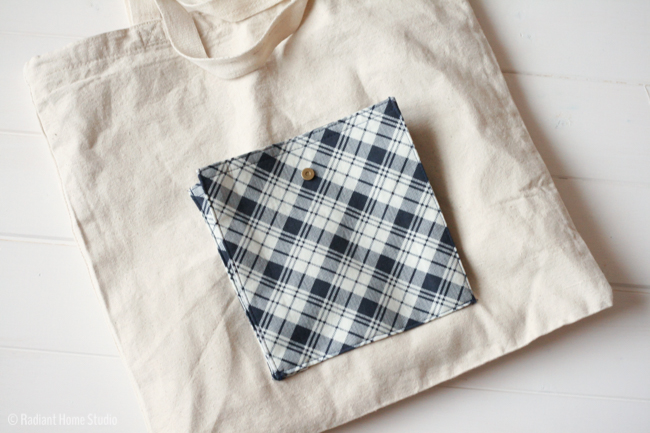
13. Let’s make the flap! Place the flap pieces right sides together and stitch on 3 sides, leaving the long side without the snap open. Trim the corners, turn it right side out, and press. Topstitch around the 3 sides at 1/8″. (Use the zipper foot again to get around the snap if needed.) Fold and press the raw edge of the pocket flap toward the side with the snap, 1/4″.
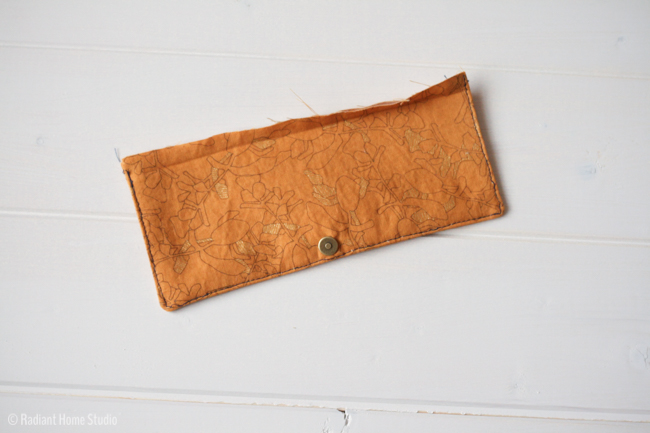
14. Snap the flap to the pocket and mark the place where the folded top edge of the pocket flap meets the bag.

15. Unsnap the flap and fold it up as though it were opened. Match the fold to the marks you just made and stitch it in place.
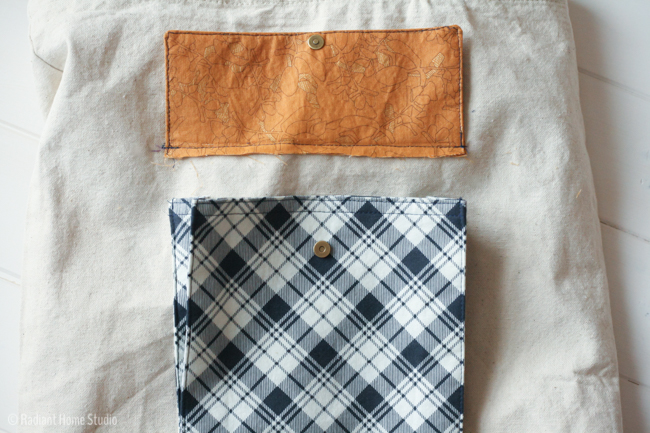
16. Fold and press the pocket flap down. Topstitch along the top edge at 1/8″ and again at 1/4″ below that. (This is just below the raw edge that is under it so that the raw edge will be concealed when you open the flap.)

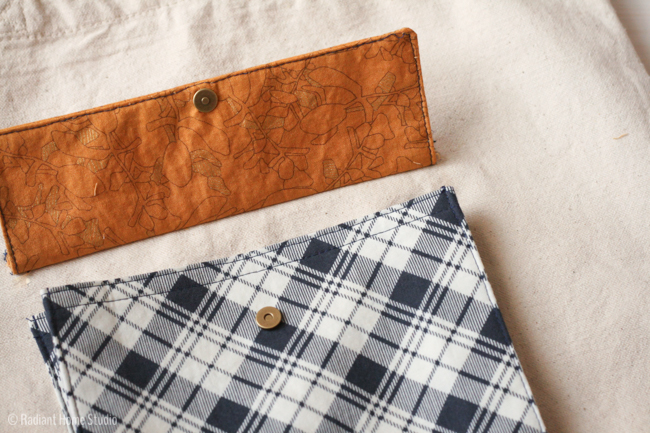
Don’t be intimidated by the number of steps! With practice, you can add a pocket like this in 15-20 min. Once you master the basic pocket, you can branch out and try different closures (hook-and-loop tape, buttons, or other latches) or trims (add some lace or use bias tape on the flap). You could even try making a patchwork pocket to use up those smaller scraps. Be creative and make it your own!

Also, don’t miss the first Tote Bag Upgrade post: 2 Ways to Add a Lining to a Tote Bag



Cute! I love a good cargo pocket….and pockets on bags, the more the merrier!
Thank you Teresa!
What a neat cargo pocket! A simple way of getting a nice deep pocket. Thank you for the tip!
Thank you! I hope you find it useful 🙂
I love the pleats in the pocket to add depth, and the fact you have used different fabrics:)
Thank you Vicky! I could see this as a great way to use scraps of coordinating quilting fabrics. You could even use different fabrics for the linings to make it really colorful and fun.
Another wonderful tutorial, this kind of pocket are very useful, and you make it look so easy to sew
Hi! I’ve been wanting to use one of these totebag upgrade tutorials, and this past weekend the opportunity came to do so. I made a cargo pocket for a totebag lining and customized the shape of the flap, making it curved. It worked out very well, and I was pleased with how it turned out.
Thank you for all of these lovely tutorials!
I’d love to see it! Tag me on social media if you post it 🙂
Hi love the pocket, however how to I proceed to make the same fold on the bottom side of the pocket? I have tried but its a bit messy! Greetings, Marina
It would be too bulky to make a bottom fold with this method. The best directions I have for the type of cargo pocket you want are in the Oliver + S Cargo Pants pattern. Basically, you make the folds and cut out squares from the bottom corners to the first fold lines. Then you need to stitch in the corners to make the pocket corners. Maybe try this tutorial…
Thank you so much, this works like a bom! I have made these pockets on a “bush wacking” bag and it looks amazing.
Regards,
Marina
What a wonderful up-grade. Giving a face-palm…why didn’t I think of that before??? I have many tote bags to add pockets to, this will make them so much more useful. Thank you for sharing. Blessings.
Glad it was helpful!
Very useful and a tutorial very nicely done.
Thank you!